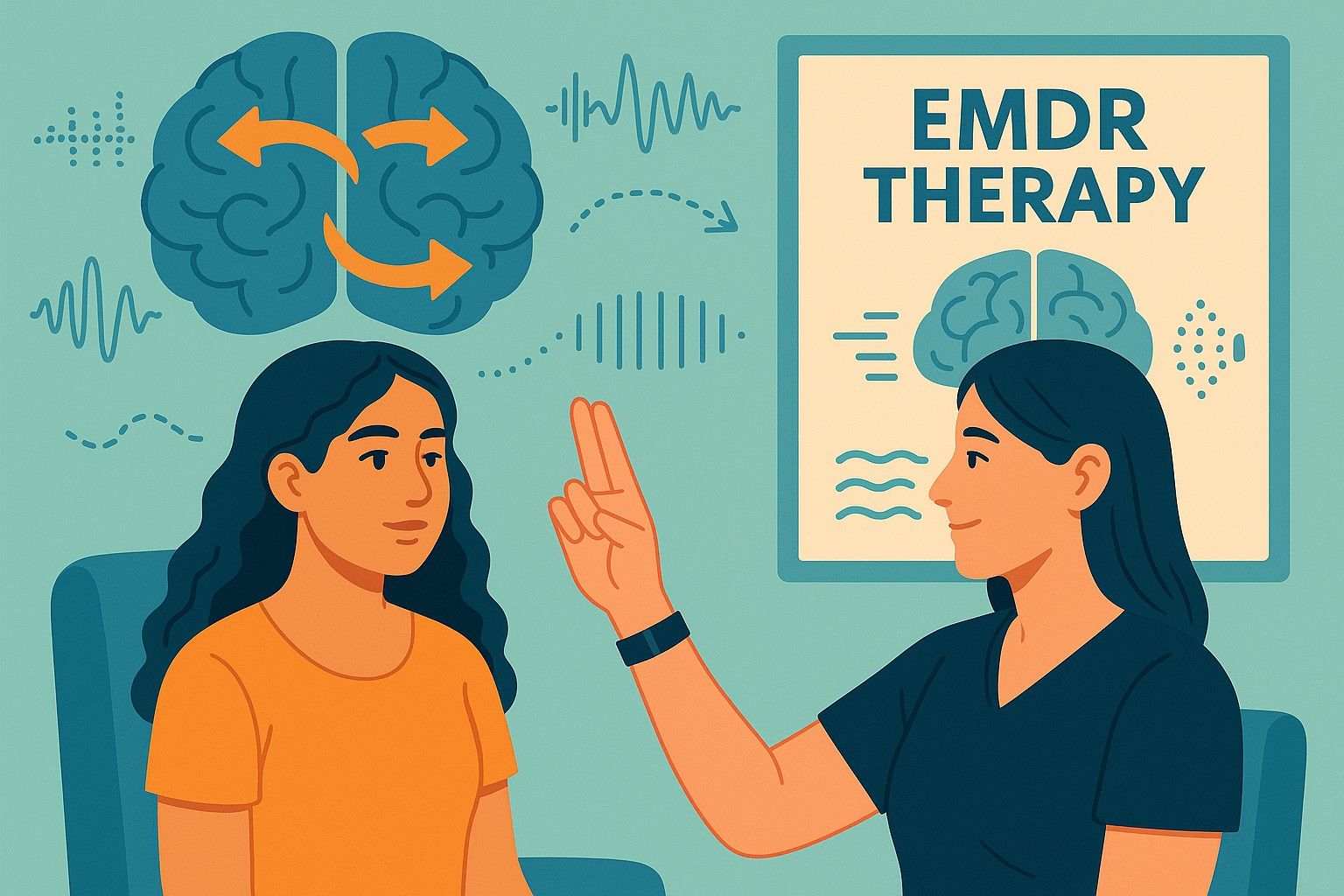EMDR stands for Eye Movement Desensitisation and Reprocessing. It’s a structured, integrative
psychotherapy that helps people process and recover from traumatic memories or disturbing life
experiences. Unlike traditional talk therapy, EMDR focuses less on discussing the event in detail
and more on changing the way it is stored in your brain.
Originally developed by American psychologist Dr. Francine Shapiro in the late 1980s , EMDR has
gained global recognition and is now recommended by leading health organisations such as
the World Health Organization (WHO) and the American Psychological Association (APA) for the
treatment of trauma and PTSD.
EMDR is grounded in scientific evidence and recognised by the Australian Psychological
Society as an effective psychological treatment.
EMDR therapy is based on the understanding that traumatic memories can become “stuck” in the
brain, causing emotional distress and symptoms such as anxiety, flashbacks and nightmares.
These memories are stored in a raw and unprocessed form, making it difficult for your brain to
integrate them into your normal memory network.
Through a series of guided sessions, EMDR uses bilateral stimulation typically in the form of eye
movements, tapping or auditory tones to help activate both hemispheres of your brain. This process
enables you to reprocess distressing memories, reducing their emotional charge and allowing you to
gain new insights and perspectives.
Think of it as your brain’s natural healing mechanism finally getting unstuck. EMDR helps you
process traumatic memories in a way that allows you to move forward without being weighed down
by the past.
– Ms. Devyani Barodh, Assistant Professor
Dept. of Clinical Psychology

